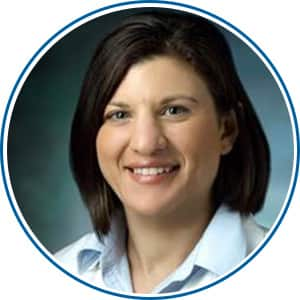Interviews: 2019 Nobel Prize in Physiology or Medicine - Cellular Oxygen Sensing
Unravelling Cellular Oxygen Sensing Wins Nobel Prize!
We have gathered reactions from Dr. Semenza, Dr. Ratcliffe and Dr. Kaelin's mentees and colleagues, about the seminal work leading to this year's Nobel Prize in Physiology or Medicine, to highlight the impact of their discoveries for both basic and translational research.

Images courtesy of Nobel Prize
The HIF-1 alpha (HIF-1a)/ARNT transcription complex, often referred to as a "master regulator of cellular adaptations to oxygen levels", took center stage in this year’s Nobel Prize in Physiology or Medicine. The recipients, Dr. Gregg L. Semenza, Dr. Peter J. Ratcliffe and Dr. William G. Kaelin have each contributed to uncovering the molecular underpinnings of how cells sense varying oxygen levels and respond accordingly to survive.
The year was 1992, when the HIF-1a/ARNT complex was first identified by Dr. Gregg L. Semenza's group. The discovery was propelled by Dr. Semenza's interest on the transcriptional regulation of Erythropoietin (EPO), which was sensitive to oxygen levels and induced under hypoxia. Dr. Semenza's studies identified a transcription factor complex, HIF-1, which under hypoxia bound to an enhancer sequence in the EPO gene. Parallel studies by Semenza's contemporary, Dr. Peter J. Ratcliffe, also focused on the oxygen dependent modulation of EPO’s transcription and revealed the ubiquitous nature of the hypoxia effect, being able to regulate EPO's expression in various organs and tissues.
The missing piece of the puzzle, specifically, how HIF-1a is regulated by oxygen came into focus in 2001 through consecutive publications from Dr. Ratcliffe and Dr. Kaelin's groups. In studying the role of the von Hippel-Lindau protein (pVHL) in cancer, Kaelin's studies revealed the inhibitory role of pVHL on hypoxia inducible genes. Ratcliffe and Kaelin's studies filled the blanks by uncovering the key enzymatic events and players, namely HIF's hydroxylation at key proline residues by prolyl hydroxylases, which underscored its targeting for degradation by the E3 ubiquitin/pVHL complex.
Together their discoveries revealed for the first time how cells sense and adapt to changes in oxygenation. Understanding this basic cellular mechanism continues to propel investigation on the role of cellular adaptations to varying oxygen levels in physiological and pathophysiological processes.

Karen Padgett
Founder of Novus Biologicals, a Bio-Techne Brand
"Congratulations to Drs. Gregg L. Semenza, Peter J. Ratcliffe and William G. Kaelin for their Nobel Prize in Physiology or Medicine for elucidating the key molecules involved in oxygen sensing and adaptation to hypoxia. It has been an honor for Novus Biologicals to support hypoxia research (and conferences), as well as work with these pioneers in research of hypoxia and related processes for over 20 years. We are excited to see how this research continues to lead to discoveries that lead to cures."

Dr. Daniele M. Gilkes, MS, Ph.D.
Assistant Professor, Department of Oncology, Chemical and Biomolecular Engineering, Johns Hopkins School of Medicine
"It was an honor to train under the guidance of Dr. Gregg Semenza. Dr. Semenza's seminal discovery of HIF-1, and later Dr. Kaelin and Sir Peter J. Ratcliffe's discovery of VHL's role in HIF regulation, has paved the way for researchers to investigate the contribution of oxygen regulation to human disease. Now that we understand how oxygen levels affect cellular metabolism and physiological function, I hope we will see new treatments, aimed at oxygen regulation, emerging for anemia, kidney disease, myocardial infarction, and cancer."

Dr. Weibo Luo, Ph.D.
Assistant Professor and CPRIT Scholar in Cancer Research, Departments of Pathology and Pharmacology, UT Southwestern Medical Center
"Congratulations to Drs. Gregg L. Semenza, William G. Kaelin, and Peter J. Ratcliffe for their 2019 Nobel Prize in Physiology and Medicine! Dr. Semenza and his lab members for the first time identified and cloned the molecules called hypoxia-inducible factor-1 alpha and beta in early 1990s and have studied for almost 30 years how these molecules control cellular responses to reduced oxygen availability. Dr. Semenza's seminal work uncovers the fundamental mechanism of oxygen homeostasis in mammals and offers opportunities to treat human diseases, including cancer, anemia, and stroke. Dr. Semenza is a great mentor, collaborator, and friend of mine. I am extremely proud of being a member of the Semenza Lab and highly appreciate his mentorship!"

Dr. Qing Zhang, Ph.D.
Associate Professor, Department of Pathology, UT Southwestern Medical Center
"This is a well-deserved honor for Drs. Kaelin, Semenza and Ratcliffe on identifying the key oxygen sensing pathways in physiological conditions as well as in diseases including cancer. Their discovery has directly contributed to the use of VEGF inhibitors in current clinical settings in multiple cancers and also current HIF2a inhibitors used in clinical trials for kidney cancer."

Prof. Tyson V. Sharp, Ph.D. BSc. (Hons)
Professor of Cellular and Molecular Biology, Centre Lead | Centre for Cancer Cell and Molecular Biology (CCMB), Barts Cancer Institute - a Cancer Research UK Centre of Excellence
"The pioneering studies of Profs. Kaelin, Ratcliffe and Semenza on the mechanism by which organisms can sense and respond to oxygen has been a fundamentally and hugely significant finding. Through this work over many years, we can see that this mechanism underlies a multitude of fundamental cellular and organism level physiology and disease processes. Deregulated oxygen sensing is tied to a broad range of disease phenotypes such as cancer. As someone whose lab mainly focuses on basic biology, I am pleased to see the importance of such work highlighted by Prof William Kaelin; where he states: 'Lack of knowledge is the true bottleneck to clinical translation. We need to stop telling basic scientists, especially trainees, that their work’s value lies in its translation.'"